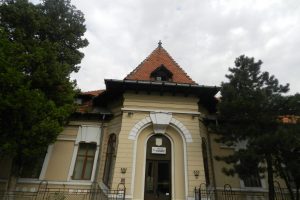

The parish church “Saint Nicholas”, dates from 1862. The inscription of the place of worship, indicates that “was built this Holy place […] in 1863.” The same inscriptions recall that in 1955 was restored theold painting by the contribution of Florescu Ilie and of parishioners and the repairs took place after the 1977 earthquake. In the years 1988-1989, during the pastoring of P.S.S. Gherasim Cristea, Bishop of Râmnic and Arges and of P.S.S. Bishop Calinic Argesanul, the church was painted again. The painting was done by Ilie Căpușe from Vernești, Argeș, in fresco technique.
Piatra Olt was first attested in a document of the times in 1519 (written documents) on 14 April. Neagoe Basarab, in a document issued in Targoviste the entrance towards the monastery Seaca (Olt county) given by Manea Cluceru several villages among which the village Criva with all boundary. The Piatra Village is certified in April 14, 1529 in an ancient document issued by Pârvu, big ban of Craiova that in the day he died in this village offered to the monastery Tismana the village Turceni. But the history of Piatra-Olt town does not begin in 1529, but long before the conquest of Dacia by the Romans. In the Archives of Oltenia issued by the Romanian Academy , in this case by the Research Institute of Social and Humanistic Craiova in which the archaeological excavations of Roman castrum from Enosesti (Acidava) in Piatra Olt, Olt County, is attested this settlement. Professor Constantin Preda and professor Aurelia Grosu do research in the Roman castrum, Acidava, which was part of the defense line on the Lower course of river Olt, located on the right terrace of Olt river, the castrum from Enoşeşti disappeared almost entirely due to the erosion waters of river Olt and of the affected works due to the railway Slatina- Craiova, construction, in 1872. However, from the few data and discoveries that would have been obtained it is known, onlt, that the military center was built during the reign of Trajan by Cohors I Flavia Commagenorum.
The first excavations were conducted by D.. Butulescu in 1981, but the results are practically unknown. This information comes to us also from the Archives of Oltenia, series VII, written by researcher in archeology Gh. Pompilian and Ion Ciuca. The fact is that this Roman castrum from Enosesti, Piatra Olt (Acidava) and existing civil settlements were built near a Dacian settlement from whom it borrowed the name. Under this name is mentioned in Tabula Pentingeriana, which is placed at 13 thousand of footsteps northward Romula, on the roman road which follows the right bank of the river Olt. Another predecessor Nicolae Iorga in his work “How was Romania in 1918”, states that: it was and it still is a Piatră Romanaţi, where the great Wallachian line is cutted with the new line from Câineni and leads along the water of river Olt to Corabia.





